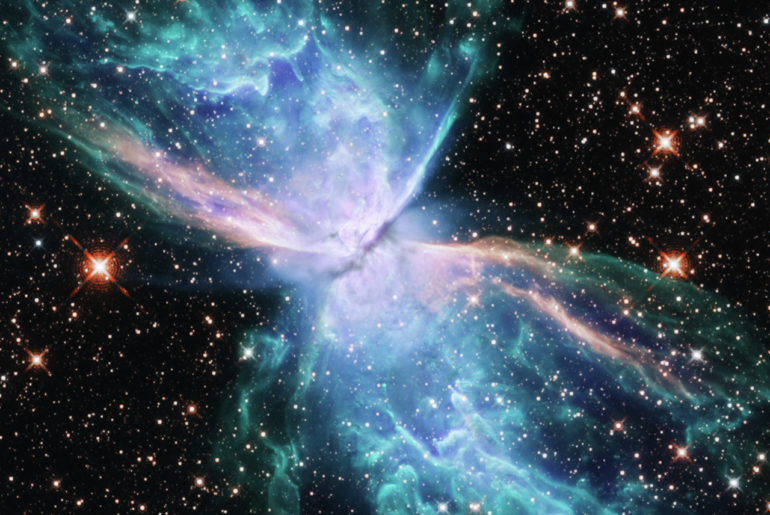
NASA’s Hubble Space Telescope captured a dying star at the center of the Butterfly Nebula that used to be approximately five times the mass of our Sun. In this case, the star has cast off its envelope of gases and is unleashing a torrent of ultraviolet radiation that makes the ejected material glow in the nebula, located 3,400 light-years away in the Scorpius. constellation
The S-shape present in the Butterfly Nebula is not caused by water in the air, but rather gas blown out at high speed by a star. Plus, the “S” only appears when captured by the Hubble camera filter that records near-infrared emission from singly ionized iron atoms. We have to say, the Tesla Roadster’s steering wheel looks somewhat similar to the Butterfly Nebula.
- Quality Optics: 400mm(f/5.7) focal length and 70mm aperture, fully coated optics glass lens with high transmission coatings creates stunning images...
- Magnification: Come with two replaceable eyepieces and one 3x Barlow lens.3x Barlow lens trebles the magnifying power of each eyepiece. 5x24 finder...
- Wireless Remote: Free includes one smart phone adapter and one Wireless camera remote to explore the nature of the world easily through the screen and...
The S-shape in the iron emission from the Butterfly Nebula is a real eye-opener. It’s commonly observed in supernova remnants and active galactic nuclei, and outflowing jets from newborn stars, but is very rarely seen in planetary nebulas,” said Joel Kastner of Rochester Institute of Technology, Rochester, New York, leader of the new study.







